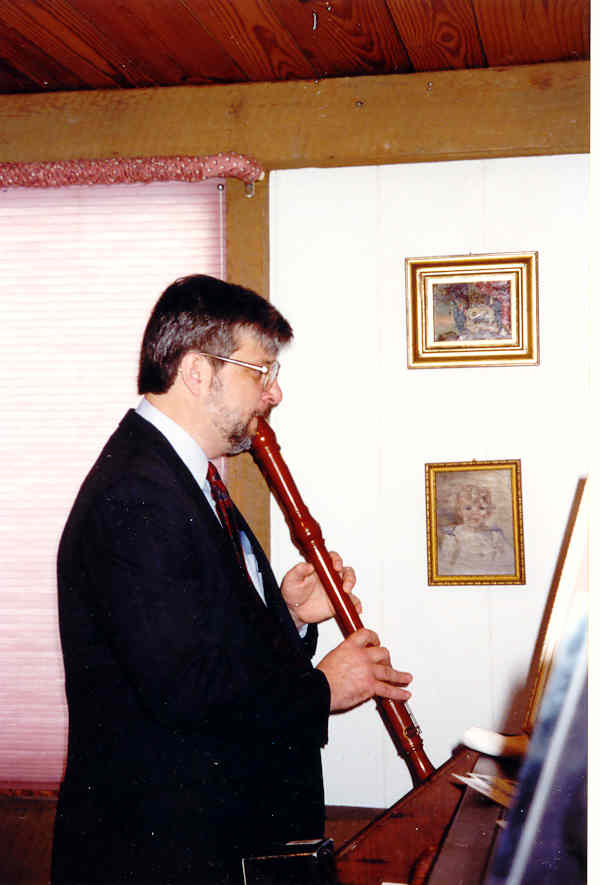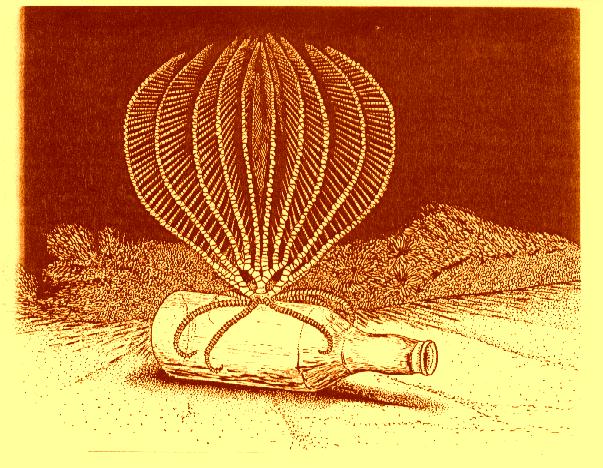(December 4, 1999)

Frederick Hatfield Clark Hotchkiss
|
|
(December 4, 1999)

Frederick Hatfield Clark Hotchkiss
My very good friend, the American palaeontologist, Frederick Hatfield Clark Hotchkiss (see also Archetyp.htm) was born on December 4, 1944 in the town of Oak Bluffs, Massachusetts. In his own words: "This is one of five small towns on the island called Martha's Vineyard. Only the town of Oak Bluffs has a hospital, so nearly everyone who is born on that island is born in Oak Bluffs no matter which town your parents are living in!" Frederick's father was a petroleum geologist who spent the first half of his career in the Middle East (Iran, Iraq, Qatar), the last one in the New York offices of the Standard Oil Co. (in charge of Middle East exploration).
Frederick received his B. S. (bachelor's degree) from MIT (Massachusetts Institute of Technology) in the field of Earth Sciences (Cambridge, 1966). Robert Shrock was the chairman of the department at that time, but had stopped teaching palaeontology. Therefore, by a cross-registration agreement between MIT and Harvard University, Frederick's courses in palaeontology were at Harvard under Harry B. Whittington. It was there that he met H. Barraclough Fell and became his student (also by cross registration) and it was during this time that he became interested in echinoderms. After a tour of duty as an engineering officer in the U.S. Navy (U.S. Navy Deep Submergence Systems Project, Ocean Engineering Branch, Bethesda, Maryland - 1966-1969), receiving Lt. USNR (honorable discharge), Frederick Hotchkiss returned to civilian life and worked for his PhD in biology at Yale University (New Haven, 1971 - MPhil, 1974 - PhD). His thesis was done under the sponge specialist Willard D. Hartman in the Peabody Museum of Natural History, Yale University. Frederick was then awarded a Smithsonian Postdoctoral Fellowship to do research under David L. Pawson (a specialist on living echinoderms) in the Division of Echinoderms, National Museum of Natural History. He became Visiting Assistant Professor of Biology at SUNY (State University of New York) College at Purchase, and it was there where Frederick met his wife Anita Pruzan-Hotchkiss (a specialist in the behavior genetics of Drosophila).
After that, there was a difficult time getting university positions, and Frederick never succeeded in being offered a career track position. With family obligations, etc., he sought work in other fields and finally became employed as a design engineer in ultrasonic transducers at Panametrics Inc. After being the Engineering Manager, Frederick is now the Manager of Transducer Products, NDT (the latter means "nondestructive testing") Division, Panametrics Inc., Waltham, Massachusetts (it is fascinating that Frederick is equally known through his numerous presentations and publications on ultrasonics and nondestructive testing).
Today, Frederick Hotchkiss is member of the following professional societies: American Association of Zoological Nomenclature; American Society of Nondestructive Testing; American Society for Testing and Materials; Biological Society of Washington; Mid-American Paleontological Society; New York Academy of Sciences; Paleontological Research Institution; and The Paleontological Society. He is also the Research Associate of the Department of Palaeobiology, Royal Ontario Museum, Toronto.
Frederick's studies on echinoderms were totally influenced by his college association with H. Barraclough Fell. It was extraordinarily charming and exciting to be with this outstanding echinoderm specialist and above all, it was H. B. Fell who ignited an interest in Frederick concerning echinoderm research. Understandably, most of Frederick's investigations has been to follow up on topics that H. B. Fell studied in one way or another, especially with respect to putting the research into a theoretical context. His scientific approach, combined together with those engineering and problem-solving approaches at MIT, have stimulated Frederick to pursue a poorly occupied field of study and led his ways of trying to think about questions regarding echinoderm ray homologies and to devote considerable time to studying both fossil and recent echinoderm fauna from all over the world (for selected bibliography of his most important works, see Archetyp.htm).

|
|
|
|
|
|
|